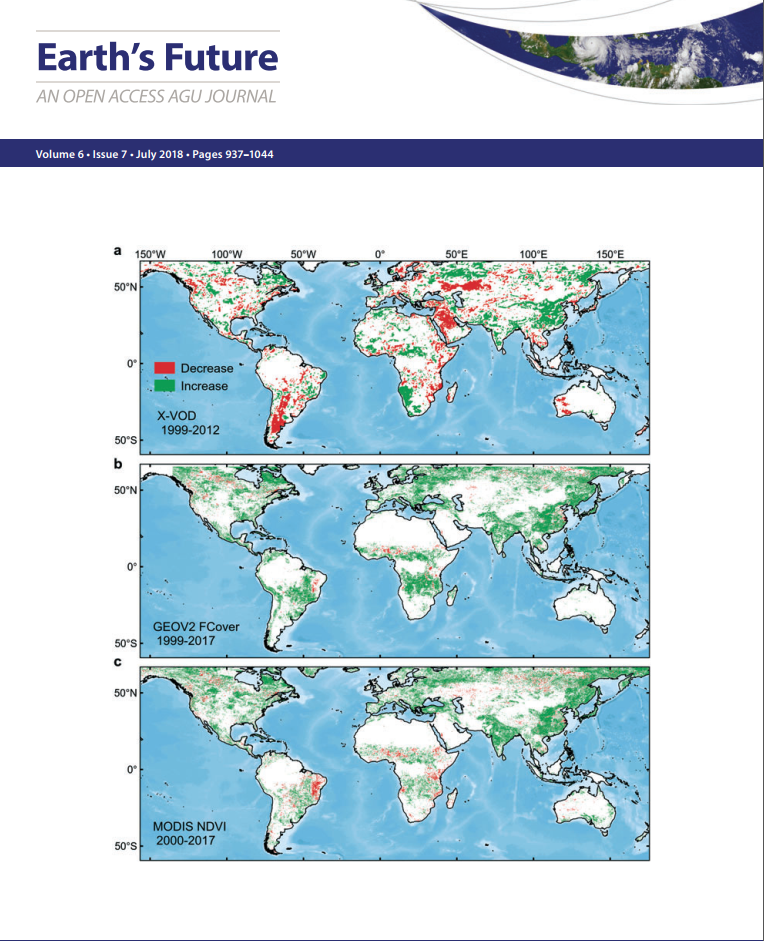- You are here: Home > Research > Research Progress
Major Greening and Biomass Increase in South China Karst During Recent Decade
A number of ecological restoration projects have been implemented in Southwest China karst area since the late 1990s.
Many studies have assessed the direct impact of these projects on vegetation, but the significance of such projects on global biomass and vegetation cover trends is rarely studied.
Recently, a new study by an international team from China, Denmark and France is among the first applying a set of state-of-the-art satellite data from various optical and passive microwave systems used to evidence a global increase in both vegetation cover and biomass.
Their results showed the growing season vegetation cover in Southwest China karst area increased from 69% in 1999 to 81% in 2017, and the growing season Normalized Difference Vegetation Index(NDVI)increased from 0.73 to 0.79, indicating Southwest China karst area was one of global hot spots with significant vegetation increase.
Moreover, this study found that the Chinese karst region as globally one of the largest coherent regions with a biomass increase, accounting for approximately 5% of the global areas with biomass increases.
These increases in vegetation cover and biomass have occurred in spite of a general decline in rainfall and soil moisture (decreased by 8% and 5% respectively from 1999 to 2012), and have been generated by widespread conservation and forestry activities.
“This study is on one hand a showcase for the complementary use of different Earth observation systems, and shows on the other hand that human made vegetation increases have major implications for local ecosystem services (for example timber production water filtration) and the global carbon cycle,” said Professor Yue Yueming from the Institute of Subtropical Agriculture (ISA) of the Chinese Academy of Sciences.
This study was funded by National Key Research and Development Program of China (2016YFC0502400), the Chinese Academy of Sciences President’s International Fellowship Initiative (2018VCC0012), the National Natural Science Foundation of China(41471445 and 41371418), the Danish Council for Independent Research (DFF) grant ID: DFF-6111- 00258, and CNES (Centre National d ’ Etudes Spatiales) through the Science TOSCA (Terre Océan Surfaces Continentales et Atmosphère) program, as well as the EC Copernicus Global Land Service (CGLOPS-1 and 199494-JRC).
The study entitled "Satellite-Observed Major Greening and Biomass Increase in South China Karst During Recent Decade" was published in Earth Future. The full paper can be found at: https://agupubs.onlinelibrary.wiley.com/doi/epdf/10.1029/2018EF000890.

Global maps of significant (P < 0.05) increase/decrease. (a) X-VOD annual average 1999–2012, (b) GEOV2 growing season FCover (1999–2017), and (c) MODIS growing season NDVI (2000–2017).(Imaged by ISA)
Contact: WANG Kelin
E-mail: kelin@isa.ac.cn
Institute of Subtropical Agriculture, Chinese Academy of Sciences
Address: Mapoling of Changsha City, Hunan province, P.R.China.Tel: +86-731-4615204 Fax: +86-731-4612685

